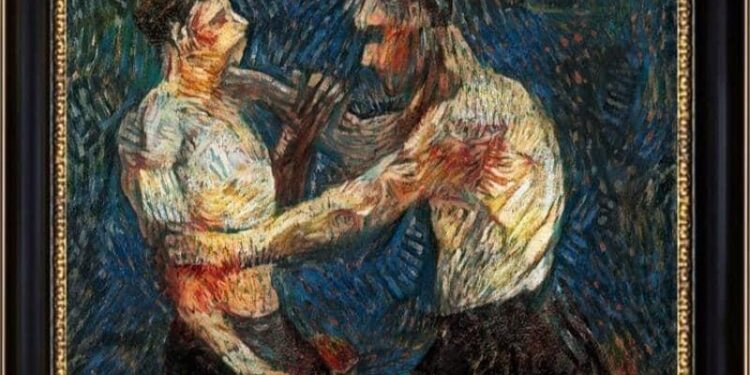In a groundbreaking development for the art world, researchers have unveiled an AI-based tool capable of restoring age-damaged artworks within hours, revolutionizing the preservation process. This innovative technology combines advanced machine learning algorithms with detailed art historical data to repair and rejuvenate paintings that have suffered from the ravages of time. Heralded as a major leap forward, the tool promises to significantly reduce the time and cost traditionally required for art restoration, offering museums and collectors a powerful new means to safeguard cultural heritage.
Researchers Develop AI Technology to Rapidly Repair Age-Related Art Damage
Groundbreaking advancements in artificial intelligence have led to the creation of a sophisticated tool capable of restoring artworks suffering from age-related deterioration in a matter of hours, a process that traditionally required months of painstaking manual labor. Developed by a multidisciplinary team of researchers, the AI utilizes deep learning algorithms trained on thousands of high-resolution images of both degraded and restored masterpieces. This enables the system to detect cracks, discoloration, and material loss with remarkable precision, reconstructing missing textures and colors while respecting the original artist’s intent.
The technology offers numerous advantages, including:
- Accelerated restoration timelines reducing costs and disruption to exhibitions.
- Non-invasive analysis that preserves the integrity of fragile artworks.
- Adaptive learning to improve outcomes across different styles and mediums.
| Feature | Traditional Methods | AI-Driven Tool |
|---|---|---|
| Restoration Time | Months to Years | Hours |
| Accuracy | Variable, dependent on restorer skill | Consistent, data-driven |
| Intervention Level | Physical, risk of damage | Digital, minimal risk |
Innovative Algorithms Analyze and Restore Artwork Details with Unprecedented Precision
Utilizing cutting-edge neural networks, the newly developed AI tool intricately examines the fine details embedded within centuries-old paintings. By dissecting layers of pigment deterioration and historical brushstroke techniques, the system reconstructs missing or faded sections with remarkable fidelity. This approach transcends traditional restoration methods, which often rely heavily on manual intervention and subjective interpretation, positioning artificial intelligence as a transformative ally for conservators worldwide.
Key features of this novel technology include:
- Multi-layer analysis: Decodes underlying paint strata to understand original artwork composition.
- Adaptive learning: Continuously improves restoration accuracy by referencing a vast database of classical paintings.
- Automated texture replication: Reconstructs weathered surface patterns to maintain authenticity.
| Aspect | AI Capability |
|---|---|
| Color Correction | Restores original hues lost over time |
| Damage Mapping | Identifies cracks and pigment degradation |
| Detail Reconstruction | Rebuilds intricate motifs and strokes |
Experts Recommend Integration of AI Tools in Conservation Practices for Museums and Galleries
Leading conservationists and technology specialists are advocating for the widespread adoption of artificial intelligence to enhance preservation efforts within museums and galleries worldwide. This innovative approach leverages AI’s ability to analyze and repair artworks with unprecedented speed and precision, dramatically reducing the time previously required for painstaking manual restoration. Experts emphasize that AI tools can identify subtle patterns of degradation such as cracks, fading, and dirt accumulation-features often invisible to the human eye-and address them with tailored algorithms that preserve the authenticity of the original piece.
In addition to accelerating restoration, AI integration offers a host of benefits that could revolutionize conservation protocols:
- Cost Efficiency: Reduced labor and material costs by automating repetitive and intricate restoration tasks.
- Consistent Quality: Standardized restoration outcomes minimizing human error and variability.
- Data-Driven Insights: Comprehensive digital archives generated through AI assessments inform future conservation decisions.
| Feature | Traditional Methods | AI-Enhanced Methods |
|---|---|---|
| Restoration Time | Weeks to months | Hours to days |
| Precision | Subject to conservator’s skill | Microscopic and data-driven |
| Documentation | Manual recording | Automated digital logs |
Final Thoughts
As AI continues to advance, tools like this groundbreaking restoration technology promise to revolutionize the preservation of cultural heritage. By dramatically reducing the time and cost involved in repairing age-damaged artworks, researchers are opening new possibilities for museums and galleries worldwide. While the technology is still in its early stages, experts believe it could soon become an indispensable asset in safeguarding history for future generations. The intersection of art and artificial intelligence is proving not only innovative but transformative, signaling a new era in conservation efforts.































